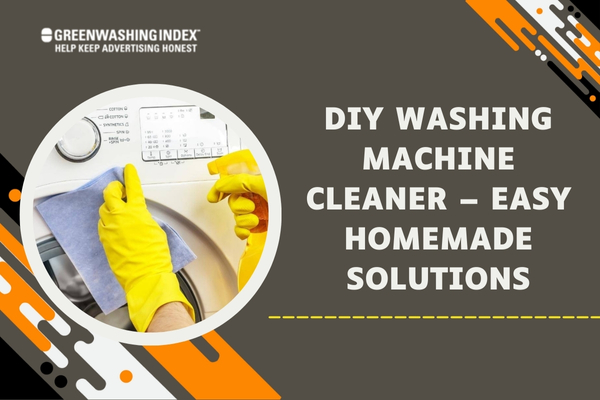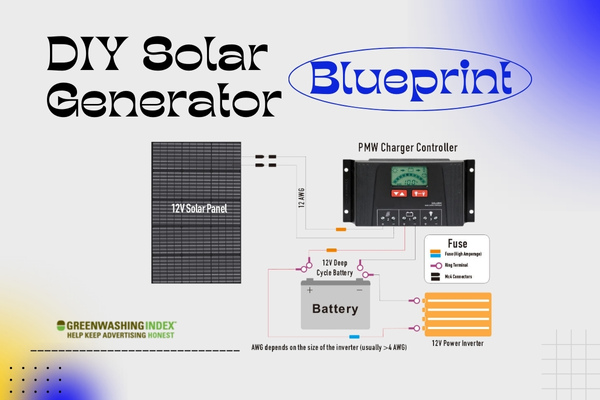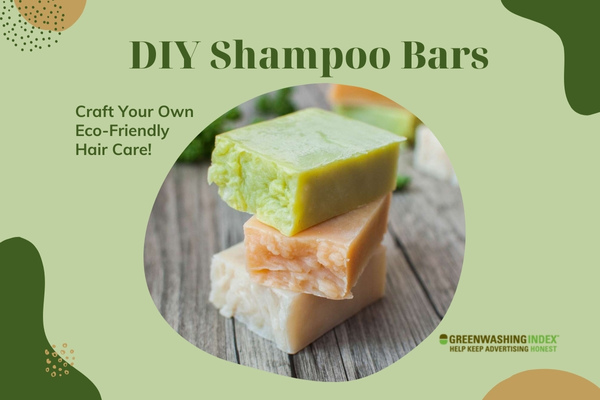Keeping your washing machine in top condition is essential for maintaining its efficiency and ensuring your laundry smells fresh. Over time, soap scum and grime can accumulate, leading to unpleasant odors and reduced performance.
The solution? A DIY washing machine cleaner that you can easily whip up at home using everyday ingredients. Imagine transforming your washer into a pristine cleaning machine with just a few simple steps! With the right approach, you’ll not only enhance your appliance’s longevity but also enjoy the satisfaction of a job well done.
Why a DIY Washing Machine Cleaner is Must-Have?
Just like we take care to keep our clothes clean, it’s just as important to make sure the machine that washes them is also clean. When we use our washing machine, soap scum, grime, and laundry detergent can build up inside.
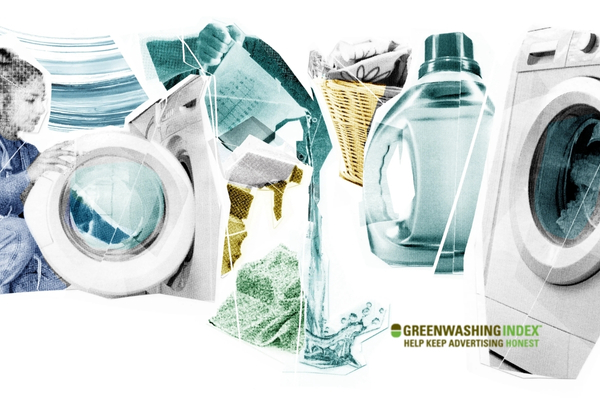
Not only this, but germs and bacteria love these warm, damp spots. If we leave it dirty for too long, it could start to smell bad or even make our clothes come out less clean than we put them in.
Because of this, making a DIY washing machine cleaner should be on everyone’s list of home tasks. Doing so helps make sure that our dependable washing machine keeps running smoothly for a good long while.
A big reason to keep up with cleaning your washing machine is for its performance — you want your washer to work at its best always! Just imagine all the stuff that can hide in there: bits of food from those messy eaters’ clothing, traces of oil from that bike repair right before the wash. All those leftovers are not good news for your washer.
Over time, if all this build-up isn’t taken care of by regular cleaning:
- The drain gets clogged
- The efficient spinning slows down
- That fresh scent? Gone!
But when you regularly use a DIY washing machine cleaner, you can avoid all this trouble and keep everything running without any sad surprises.
Regular cleaning with a homemade appliance cleaner stops dirt before it settles down and tells it who’s boss. But more than showing dirt the door out of your washer, you also get peace knowing that your favorite appliance won’t quit on you suddenly because you cared enough to keep it clean.
Do you see how neat machines work much better and stay around longer? It’s clear why having a DIY cleaning solution nearby makes sense for keeping things working great and saving loads down the road on repairs or, worse yet – needing a new one altogether!
Eco-Friendly Aspect
Not only does whipping up your own washing machine cleaner at home help keep your washer happy, but it’s also kinder to Mother Earth! Think about all those store-bought cleaners – they often have harsh chemicals that aren’t friends with the environment.
When you decide on an eco-friendly cleaner made by yourself:
- You know exactly what goes into it – no hidden nasties.
- Less waste heads out to harm nature since homemade mixtures don’t need single-use plastic bottles.
- You’re choosing not to support big chemical concoctions, which often end up polluting rivers or hurting wildlife.
Going DIY means going gentle on Earth while still getting stellar results in your laundry room.
By opting for something homemade like vinegar mixed with baking soda (nature’s fizzy miracle), lemon juice (superhero against nasty smells), or essential oils (giving freshness without fumes) – I’m talking about using things safe enough even for salad dressings! By taking this small step towards an eco-friendly lifestyle, I help both my home appliances run smoothly and protect nature outside my own walls!
So turning towards homemade laundry cleaners isn’t just something nice; rather, think about it as doing our part for bigger changes in how we treat our planet – which starts right here at home with each spin cycle!
Basic Ingredients for DIY Washing Machine Cleaner
When it comes to keeping my washing machine spick and span, I prefer making my own washing machine cleaner. It’s simple and uses everyday items you likely have in your cupboard right now. Here are the go-to ingredients that make a mighty good DIY washing machine cleaner:
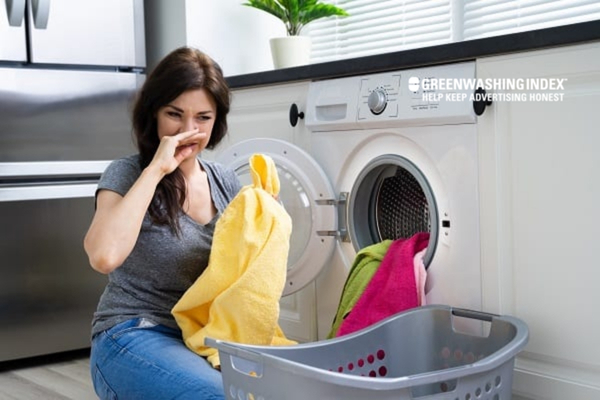
- White Vinegar: It’s a natural deodorizer and mild acid that can cut through grease and mineral build-up.
- Baking Soda: Excellent for scrubbing and neutralizing odors.
- Lemon Juice: Another acidic marvel, it’s great for stain removal and adds a fresh scent.
- Hydrogen Peroxide: Known for its disinfecting properties, it’s an excellent bleacher that tackles mold and mildew.
- Essential Oils (like tea tree or lavender): Not only do they leave behind a pleasant smell, but many also have antibacterial properties.
Exploring their Role
DIY washing machine cleaners are an effective and eco-friendly alternative to commercial products, which often contain harsh chemicals. Regular cleaning of your washing machine is essential to prevent odors, mold, and detergent buildup that can affect the cleanliness of your laundry. Utilizing simple household ingredients like vinegar and baking soda not only saves money but also contributes to a healthier environment.
Here are some popular DIY recipes and their benefits:
- White Vinegar:
- Cleanses: The acidity helps dissolve soap residue in the wash drum.
- Sanitizes: Kills bacteria lurking inside your appliance.
- Deodorizes: Removes those musty smells clothes can get after sitting wet too long.
- Baking Soda:
- Soft Scrubbing Power: This fine powder can be cleaned without scratching delicate surfaces like the glass door or touch screen displays.
- Odor Neutralizer: Baking soda traps unpleasant smells.
- Lemon Juice:
- Stain Fighter: Lemon juice is naturally strong enough to battle against rust stains inside the drum.
- Fresh Scent Contributor: Leaves behind a bright, citrusy aroma, which is always nice.
- Hydrogen Peroxide:
- Mold & Mildew Attacker: This bubbly substance targets fungus with Vim—it’s why you see foaming action when applied to grimy areas.
- Essential Oils:
- Antibacterial Agents: Many essential oils like tea tree oil help keep germs at bay while also gifting your laundry area with a spa-like scent profile when used as part of your cleaning mix.
Using these common ingredients not only makes for an eco-friendly cleaner but ensures that maintaining my home does not require harsh chemicals or breaking the bank – all while being gentle on this important household appliance!
Making your own natural Washing Machine Cleaner
Keeping a washing machine clean is important. It makes sure our clothes stay fresh when we wash them. Today, I want to share how to make a DIY washing machine cleaner. This is better for the environment and can be pretty easy on your wallet.
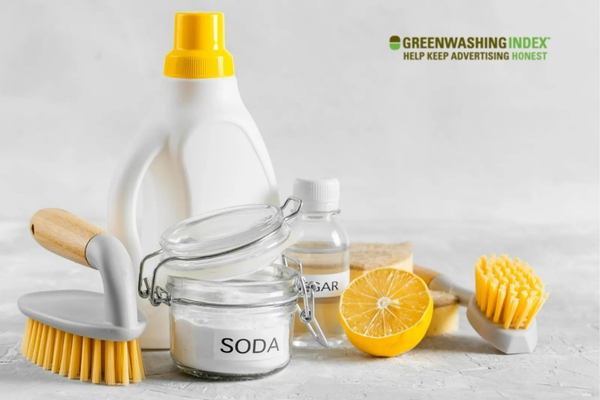
Vinegar + Baking Soda + Essential Oil Cleaner
DIY washing machine cleaners using vinegar, baking soda, and essential oils are effective, eco-friendly solutions to maintain your appliance’s cleanliness. This combination not only eliminates odors but also helps dissolve soap scum and mineral deposits. Regular cleaning with these ingredients can enhance your washing machine’s performance and longevity. Here’s how to create and use this natural cleaner:
- Gather your materials: You need about two cups of white vinegar, half a cup of baking soda, and about 10-20 drops of your favorite essential oil (like lavender or lemon for their nice smells).
- Mix the baking soda and essential oils: In a small bowl or container, pour in the baking soda. Add the essential oil drops right into it. Mix this with a spoon until it gets all crumbly.
- Use the mixture:
- Start with an empty washing machine.
- Sprinkle the mix of baking soda and oils at the bottom of the drum.
- Pour the vinegar into the detergent drawer or directly into the drum.
- Run your washing machine on its hottest cycle.
This blend helps get rid of bad smells and even clears out buildup like soap scum.
Vinegar + Essential Oil Mix for Weekly Cleaning
Using a vinegar and essential oil mix for weekly cleaning of your washing machine is an effective way to maintain freshness and prevent odors. This natural solution not only cleans but also sanitizes, eliminating mold and mildew buildup. Incorporating essential oils adds a pleasant fragrance while enhancing the cleaning properties. Here’s how to create and use this simple yet powerful cleaner:
- Prepare: Just need white vinegar (about four cups) and 10-20 drops of essential oil.
- Mix them together: In a jug or bucket, mix both ingredients until they are well combined.
- Clean:
- Again, begin with an empty washer.
- Pour this liquid where you’d usually put detergent.
- Turn on a short, warm water cycle.
This keeps things smelling good between deep cleans.
Intense Deep Cleaning Formula using Dish Soap, Washing Soda, and Tea Tree Oil
For an intense deep cleaning of your washing machine, a formula using dish soap, washing soda, and tea tree oil is highly effective. This combination leverages the grease-cutting power of dish soap, the stain-fighting properties of washing soda, and the natural antibacterial benefits of tea tree oil. Regular use of this cleaner can help eliminate odors and buildup, ensuring your machine runs efficiently.
Here’s how to prepare and apply this powerful cleaning solution:
- What you’ll require: Gather some dish soap (just one tablespoon), a quarter cup of washing soda (not baking!), four cups hot water from your kettle or stove, and ten drops of tea tree oil for its natural anti-mold properties.
- Mix it up well: Dissolve that washing soda in hot water first in a bucket or bowl large enough to avoid spills; then add tea tree oil followed by dish soap last so it doesn’t bubble over crazy.
- Apply step by step:
- Kick off with no clothes inside your washer.
- Dump this powerful concoction right into its drum.
- Select either “clean washer” if there’s such a setting; otherwise, the longest, hottest wash cycle available will do fine, too.
Doing this serious scrub-down maybe every few months, depending on use, will keep performance top-notch, avoiding grimy glitches along the way, guaranteeing daily duties delight rather than dismay!
How these DIY Cleaners Work?
When I talk about making a DIY washing machine cleaner, I like to explain how it truly gets your appliance clean. You see, the power behind this homemade mixture comes from two very common kitchen items: baking soda and vinegar. Now, the magic happens when you understand a little science about the pH scale.
The pH scale measures how acidic or basic a substance is on a scale from 0 to 14. Anything below 7 is considered acidic, like lemon juice or vinegar, while anything above 7 is basic, also known as alkaline — baking soda falls into this category.
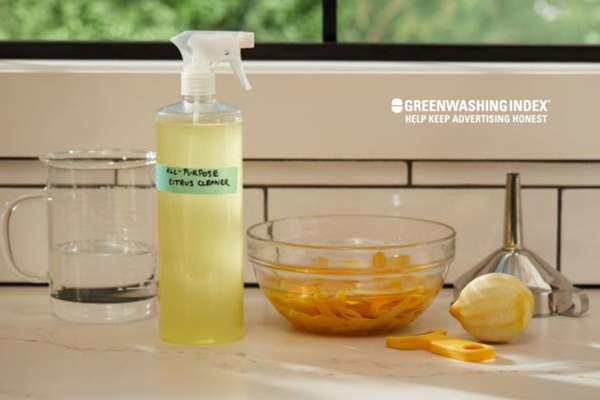
What’s so special about mixing these two? Well, vinegar (which is acetic acid) has a pH around 2-3, which means it’s quite acidic. Baking soda (sodium bicarbonate), on the other hand, typically has a pH level of around 9. When combined in the right way, these household ingredients work together to break down grime and soften water deposits because when an acid and base meet, they react.
Now, here’s where it gets interesting! This reaction forms water and sodium acetate, which dissolves dirt well. But what’s really great about cleaning my washing machine is that during this reaction between vinegar and baking soda, they fizz up (you might have seen this in science class volcanoes). This fizzing helps dislodge any gunk stuck in my washer without me having to scrub.
Best Practices for Mixing Your Ingredients
When I’m mixing up my DIY cleaning solution, there are some best practices I follow for safety and effectiveness:
- Always add baking soda first: Pour some into your empty washing machine drum before starting with other ingredients.
- Pour vinegar slowly: After adding baking soda into my drum, I gently pour in the vinegar – slowly is key here because if you add it too fast, well… remember those foaming science class volcanos? That will be your laundry room!
- Use hot water wisely: Hot water can help enhance the chemical reaction between baking soda and vinegar but remember not to use boiling water as extreme temperatures might damage parts of your machine.
- Don’t mix too much at once: It’s tempting to think that cleaner equals more clean but trust me, you don’t want overflowing foam! Stick with small amounts – say half a cup each – especially if you’re trying this out for the first time.
- Allow space for action: Give them space to bubble up without causing any overflow; basically, don’t close that door immediately after pouring in your mix.
- Lastly, wait before running any cycles; after pouring in your cleaners, give them at least 15 minutes of sitting time – let that chemical reaction do its thing!
By following these simple steps with my eco-friendly cleaner made of just baking soda and vinegar, I make sure my homemade appliance cleaner isn’t only effective but also safe for both me and my beloved washer!
Do’s & Don’t when using DIY Washing Machine Cleaners
When you’re looking to keep your washing machine in tip-top shape, making your own washing machine cleaner can be a great, eco-friendly choice; not only does it save you money, but it also helps the environment by reducing the need for harsh chemicals. While working with homemade cleaners is rather simple, there are still some important do’s and don’ts to keep in mind:
Do’s:
- DO read your appliance’s manual – Before you start, make sure to check your washing machine’s manual. This book has important info on what kind of cleaners you should use and how often to clean it.
- DO use safe ingredients – Make a cleaner with things like baking soda and white vinegar. These are safe for both your machine and your clothes.
- DO wipe down gaskets and seals – Use a damp cloth with some of the DIY cleaning solution to gently clean the rubber gaskets and seals around the door.
- DO run an empty hot water cycle – After wiping, run an empty cycle with hot water using your homemade laundry cleaner; it helps wash away leftover dirt or soap scum inside.
- DO leave the door open after cleaning – To let air flow through and dry out any moisture that could lead to mold or bad smells, keep the washer door open for a while after cleaning.
- DO clean regularly: Keep up good habits by cleaning at least once a month; this will make sure your washer stays in good shape longer.
Don’ts:
- DON’T mix chemicals – If you decide to add other things into your DIY mix, never combine different chemicals without knowing how they react together; this can be dangerous!
- DON’T overuse detergent – Even if it feels right to add extra soap when clothes are really dirty—it’s not! Too much soap creates build-up inside that is tough to clean out.
- DON’T ignore small parts – Little spaces like dispensers or filters also need attention during cleaning; don’t overlook them, as dirt builds up easily in small nooks.
- DON’T close the lid right away – Just clean everything. Great! But remember—a closed lid means trapped humidity, which might cause mildew or bad smells over time.
- Don’t underestimate regular maintenance – You might think that if everything seems fine, then skipping one or two cleanings won’t hurt, but keeping up with routine care prevents bigger issues later on.
Remembering these simple dos and don’ts will help extend the life of your washing machine while ensuring it runs efficiently at all times—all thanks to a little DIY magic!
FAQs
Can I use these recipes on any type of washing machine?
Yes, my DIY washing machine cleaner is safe for all kinds of machines. Just be sure to use it correctly, depending on whether your washer is a front-loader or top-loader.
How often should I clean my washing machine with these DIY cleaners?
I recommend cleaning your washing machine once a month with these homemade solutions. This routine helps keep it running smoothly and smelling fresh.
Are there any risks involved in using homemade cleaners?
Homemade cleaners are generally safe, especially since they contain natural ingredients. Just make sure to follow the recipes and use the proper amounts to avoid any issues.
Conclusion
Maintaining a clean washing machine is essential for optimal performance and longevity. Regular use of a DIY washing machine cleaner not only eliminates odors and grime but also promotes a healthier washing environment. Simple ingredients like baking soda and vinegar create an effective solution that is both eco-friendly and economical.
This approach not only saves money on commercial cleaners but also reduces environmental impact by minimizing chemical waste. Ultimately, adopting such practices ensures that your washing machine remains efficient and reliable for years to come.

